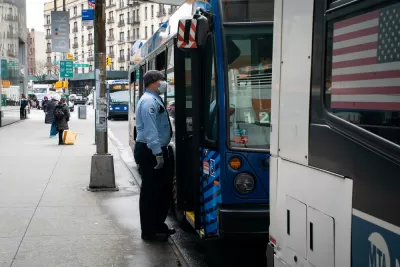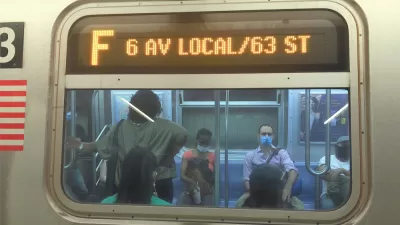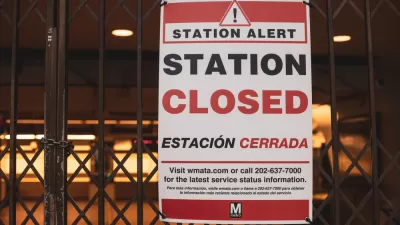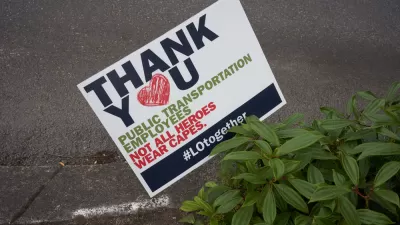There wasn't a playbook for this kind of emergency at the beginning of the year.

Transit agencies are cutting service all over the country in response to plummeting ridership and revenues as transit users stay home or choose other modes of transportation to slow the spread of the coronavirus. Jarrett Walker, who wrote a definitive article recently for CityLab on the essential service provided by transit during the pandemic, as well before the pandemic, has now written another article to provide transit agencies with guidance about why, and how, to cut service in response to the new reality.
Chapters of the article, each not as lengthy as Walker makes it seem at the beginning, read as follows:
Drilling down a bit here on that essential third chapter, Walker categorizes the types of cuts that can be made in two ways: 1) easy options, like tourism serving routes and rush hour service, and 2) difficult options, like cutting frequencies, service areas, and service hours.
Like many people lending their expertise for guidance through a confusing and uncertain time, Walker notes that from crisis comes opportunity. "And because this is a big and enduring crisis, the opportunity is big and enduring too."
FULL STORY: Cutting Transit Service During the Pandemic: Why? How? And What’s Next?

Alabama: Trump Terminates Settlements for Black Communities Harmed By Raw Sewage
Trump deemed the landmark civil rights agreement “illegal DEI and environmental justice policy.”

Study: Maui’s Plan to Convert Vacation Rentals to Long-Term Housing Could Cause Nearly $1 Billion Economic Loss
The plan would reduce visitor accommodation by 25% resulting in 1,900 jobs lost.

Planetizen Federal Action Tracker
A weekly monitor of how Trump’s orders and actions are impacting planners and planning in America.

Wind Energy on the Rise Despite Federal Policy Reversal
The Trump administration is revoking federal support for renewable energy, but demand for new projects continues unabated.

Passengers Flock to Caltrain After Electrification
The new electric trains are running faster and more reliably, leading to strong ridership growth on the Bay Area rail system.

Texas Churches Rally Behind ‘Yes in God’s Back Yard’ Legislation
Religious leaders want the state to reduce zoning regulations to streamline leasing church-owned land to housing developers.
Urban Design for Planners 1: Software Tools
This six-course series explores essential urban design concepts using open source software and equips planners with the tools they need to participate fully in the urban design process.
Planning for Universal Design
Learn the tools for implementing Universal Design in planning regulations.
Caltrans
Smith Gee Studio
Institute for Housing and Urban Development Studies (IHS)
City of Grandview
Harvard GSD Executive Education
Toledo-Lucas County Plan Commissions
Salt Lake City
NYU Wagner Graduate School of Public Service





























